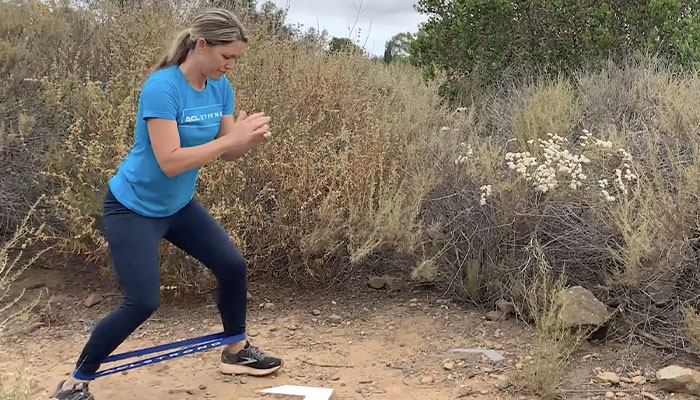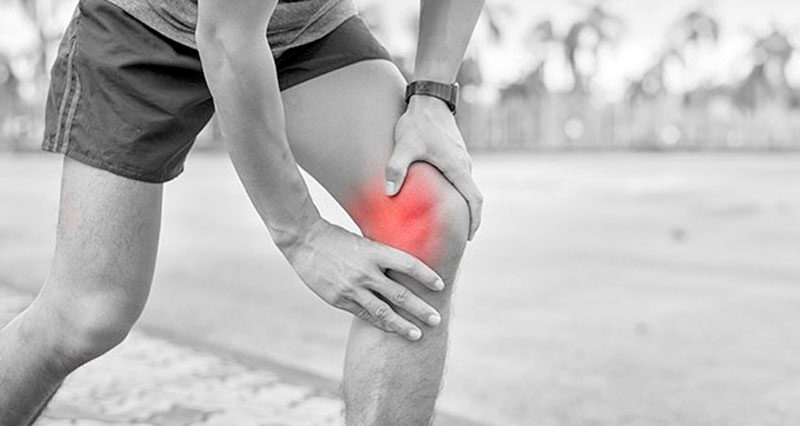Do you have pain on the inside area of the knee after taking a direct hit to the side of your leg? Does your knee feel unstable or loose when you step sideways or pivot?
If you’re having pain on the “medial”, or inside area, of your knee, an injury to the Medial Collateral Ligament, also known as the MCL, might be the reason why.
The MCL is a stabilizing ligament in the knee that can be acutely injured from an awkward fall or sudden contact with another person or object. It can also be injured gradually from repetitive stress.
If you’re having medial knee pain and haven’t sustained a fall or hit to the knee, you might be making a crucial mistake in your everyday activities that puts stress on the MCL.
Read this quick guide to the MCL sprain to find out what it is, what to do for it, and how to prevent it.
What is the medial collateral ligament (MCL)?

The MCL is made up of connective tissue that connects the femur bone to the tibia on the medial portion of the knee joint. The femur is the bone within the thigh, and the tibia is the weight bearing bone of your lower leg, known as the shin.
The MCL stabilizes the knee during everyday movements, like walking, running, and stepping up and down stairs. The MCL also provides important structural support of your knee during athletic movements like cutting, pivoting, jumping, and landing. Similar to the Anterior Cruciate Ligament, or ACL, the MCL offers support and stability to the overall structure of the knee. Unlike the ACL, the MCL often heals on its own with no need for surgery.
What can cause an MCL sprain?


Sprains occur to ligaments when they are stretched beyond what they are capable of. The result may range from micro-tearing of the fibers to a full thickness tear of the ligament.
- A Grade 1 sprain involves an overstretched ligament with micro-tearing of some of the fibers.
- A Grade 2 sprain involves a partial tear of the ligament, while the ligament is still primarily intact.
- A Grade 3 sprain involves more extensive or complete tearing (rupture) of the ligament.
Consider a sprain as having a spectrum of severity, and therefore a range for healing time will be necessary and treatment may vary. No two sprains are exactly the same.
Acute or sudden MCL sprains usually happen during a slip and fall, twist at the knee, or from a direct blow to the knee (typically from the outside of the knee), such as a tackle in soccer or football. Pain, swelling, loss of range of motion, and/or difficulty walking may follow the injury.
Another way to aggravate the MCL is from poor mechanics during everyday activities. A mistake that many people make without realizing it is allowing their knee to collapse into valgus, a medial direction, during normal movements such as getting into or out of the car, walking up or down stairs, and running. This added stress to the inside of the knee can cause the MCL to break down over time, be more vulnerable to injury, and may also be more likely to become painful. This type of injury might begin as soreness or tenderness along the medial knee, worsening over time to degenerative joint disease or osteoarthritis, if not addressed. Watch this video to see how everyday activities can contribute to knee problems..
What is the best treatment for MCL sprains?
MCL sprains are normally treated nonoperatively, meaning they do not usually require surgery. In some cases, surgery is only recommended if there is other knee damage due to the injury.
An avulsion fracture occurs when the trauma to the knee causes the ligament to disrupt a piece of bone at the bony attachment, causing a piece of bone to pull away with the ligament. Still, some MCL sprains with associated avulsion fractures are treated nonoperatively because the area gets good blood flow and the body can heal these structures on its own.
With rehab exercises focusing on range of motion, balance, stability, and strengthening the leg, the MCL will normally heal after a short period of immobilization to the knee.
Immobilization is an important first step in non-operative treatment for an MCL sprain. Medical professionals will often recommend treating the injury by keeping the knee straight (in a brace) and walking with crutches. This strategy allows the area to heal without stretching or stressing the sprained fibers.
Once the knee immobilizer is removed, physical therapy is recommended to begin moving the knee and promoting circulation so that the tissue continues to heal. Deep knee bending is usually avoided, but walking and other gentle activity is recommended in order to increase blood flow to the area, which can help speed up the healing process. Physical therapy and progressive increases in activity is crucial for getting back to normal life and preventing another similar injury.
By strengthening the muscles around the entire leg, hip, and core, and improving the body’s ability to withstand multi-directional forces, you can help bulletproof the knee for a safe return to lifelong sports and activity.
Which exercises should you do to recover from (or prevent) an MCL Sprain?
Exercises after an MCL sprain should include strengthening of the leg musculature and working on the balance and the stability of the knee. Much of the stability at the knee actually comes from the hips and core, so targeting the hips and core is essential.


Strengthening the hip musculature allows for force to be absorbed into the legs more efficiently, which can help protect the knee from injury during athletic maneuvers. Strengthening the lower and upper leg musculature also allows the body to more appropriately withstand forces of athletic movements. By incorporating an ACL Strong course into your routine, you can reduce your risk of suffering not only an MCL sprain, but other knee, hip, or ankle injuries.
Whether you are recovering from an MCL injury, or you’re trying to prevent another one, or you want to be the best athlete you can without knee problems, ACL Strong courses can help you easily focus on your knee health right from your own home, without having to figure anything out on your own. Designed by physical therapists, the process is educational and convenient, so you can transform from not knowing where your weaknesses are to becoming stronger and more balanced in the right places, so you will be more resilient long-term.
The ACL Strong goal is to help you decrease pain, prevent knee injuries, perform better, and to get you on the path to continue doing what you love to do, for as long as possible. The courses are designed for anyone who wants to protect their lifestyle and have the freedom to do what they want without being limited by pain, injury, or aging.
Not convinced yet? Read through our testimonials or frequently asked questions to see how ACL Strong can help you. Once you’ve made your decision to get the exact exercises you need and expert support, don’t wait because in just 6 weeks, you can make a transformation like never before, and protect your lifestyle long-term.



